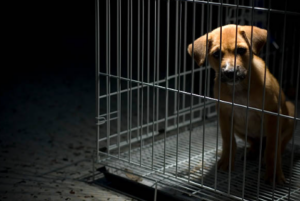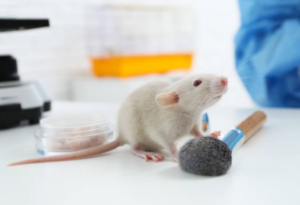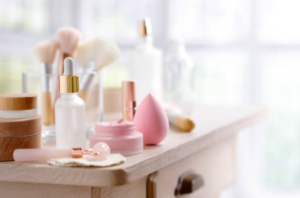Exposing Hidden Practices in Various Industries

Beauty is a multi-billion-dollar industry that thrives on the pursuit of perfection and the desire to enhance one’s appearance. However, beneath the glossy veneer of cosmetics and skincare products lies a dark and often hidden reality – the use of animal testing and cruelty in the development of these beauty products. In this blog post, we will unmask the harsh truth behind animal cruelty in the beauty industry and shed light on the various practices that continue to harm innocent animals.
Animal testing in the beauty industry has a long and troubling history. For decades, animals such as rabbits, mice, rats, and guinea pigs have been subjected to painful and sometimes lethal experiments to test the safety and efficacy of cosmetic and skincare products. These experiments can involve skin irritation tests, eye irritation tests, and even lethal dose tests to determine the toxicity of ingredients.
One of the most infamous tests is the Draize test, which involves applying a substance to an animal’s eyes or skin and assessing the damage caused. These tests often result in severe suffering for the animals involved, including redness, swelling, pain, and, in some cases, permanent damage or death.
The justification for these practices has traditionally been the need to ensure the safety of beauty products for human use. However, advancements in science and technology have rendered animal testing unnecessary and cruel. Alternative methods, such as in vitro testing and computer modeling, can provide more accurate and humane results without the need for animal experimentation.
The Global Campaign Against Animal Testing
Over the past few decades, a significant shift in public opinion and growing awareness of animal cruelty issues has led to legislative changes in various parts of the world. Several countries and regions have taken substantial steps towards eliminating animal testing in the cosmetics and skincare industry:
- European Union (EU): The EU has been at the forefront of the battle against animal testing. In 2009, the EU implemented a historic ban on the sale of cosmetic products tested on animals, as well as a ban on the testing of cosmetics on animals within its borders. This landmark legislation has paved the way for other regions to follow suit.
- Israel: Israel was one of the first countries to ban animal testing for cosmetics in 2013, setting an important precedent in the Middle East.
- India: In 2014, India also took a significant step by banning the import of cosmetics tested on animals, thereby discouraging the use of such products within its borders.
- United States: Although the United States has not implemented a nationwide ban on animal testing for cosmetics, several states have taken action. California, Nevada, and Illinois, for example, have passed laws prohibiting the sale of newly animal-tested cosmetics. These state-level initiatives represent progress toward a cruelty-free cosmetics market.
- China: China, known for its strict testing requirements, has started to make some positive changes. In 2020, the National Medical Products Administration announced new rules that allow certain cosmetics to be imported and sold in China without undergoing animal testing if they meet specific criteria.
Non-profit organizations, activists, and consumers worldwide have played a pivotal role in pushing for change and raising awareness about animal testing in the beauty industry. These global campaigns have been instrumental in pressuring governments and corporations to adopt cruelty-free practices:
- The Humane Society International (HSI): HSI has been a driving force in the fight against animal testing. They have conducted extensive investigations, advocated for policy changes, and collaborated with governments to promote alternatives to animal testing.
- PETA (People for the Ethical Treatment of Animals): PETA’s Beauty Without Bunnies program has been instrumental in certifying cruelty-free products and pressuring companies to stop testing on animals.
- Cruelty-Free International: This organization, known for its Leaping Bunny certification, has worked tirelessly to promote cruelty-free practices and has encouraged countries and companies to adopt cruelty-free policies.
- Social Media Activism: The power of social media has amplified the voices of countless individuals advocating for cruelty-free beauty. Campaigns, hashtags, and online petitions have drawn attention to animal testing practices, leading to increased awareness and consumer demand for cruelty-free products.
As consumer demand for cruelty-free products continues to grow, many major beauty corporations have taken steps to eliminate animal testing from their supply chains:
- L’Oréal: This cosmetics giant, known for its global presence, has made significant strides in developing and promoting alternative testing methods. L’Oréal has also acquired cruelty-free brands, signaling its commitment to cruelty-free practices.
- Estée Lauder: Another industry leader, Estée Lauder, has made efforts to phase out animal testing and invest in research for alternative testing methods.
- Coty Inc.: Coty Inc., a major player in the beauty industry, has committed to not conducting animal testing and has worked to ensure its brands adhere to cruelty-free principles.
While these are positive steps, it is crucial for consumers to remain vigilant and hold companies accountable for their commitments to cruelty-free practices.
Cruelty-free certification plays a crucial role in helping consumers make ethical choices when it comes to beauty products. Organizations like Leaping Bunny and PETA’s Beauty Without Bunnies program have established rigorous standards for cruelty-free certification. When a product bears the cruelty-free logo, it means that neither the finished product nor its ingredients were tested on animals.
However, it’s essential to be aware of greenwashing – a marketing strategy where companies falsely claim to be cruelty-free. To avoid falling victim to greenwashing, consumers should research brands and look for third-party cruelty-free certifications from reputable organizations.

Hidden Animal Ingredients in Beauty Products
Animal cruelty in the beauty industry goes beyond animal testing. Many beauty products also contain hidden animal ingredients that may not be apparent to consumers. Some of these ingredients include:
1. Carmine (Cochineal Extract):
- Source: Carmine is a red dye extracted from crushed cochineal insects, primarily found in South America.
- Commonly Used In: Lipsticks, blushes, eyeshadows, and red-colored cosmetics.
Carmine is used for its vivid red hue, but its source may not always be apparent on product labels. For individuals seeking cruelty-free and vegan options, it’s crucial to look for carmine-free alternatives, often labeled as “vegan red” or “carmine-free.”
2. Gelatin:
- Source: Gelatin is derived from animal collagen, typically obtained from the skin, bones, and connective tissues of animals like cows and pigs.
- Commonly Used In: Some nail treatments, face masks, and haircare products.
Gelatin is used in certain beauty products for its gelling and binding properties. Vegan and cruelty-free consumers should opt for products that explicitly state they are gelatin-free or use plant-based alternatives.
3. Lanolin:
- Source: Lanolin is a waxy substance obtained from the wool of sheep.
- Commonly Used In: Lip balms, lipsticks, and moisturizers.
Lanolin is prized for its moisturizing properties, but it is not suitable for vegans or those seeking cruelty-free options. Look for lanolin-free alternatives, often labeled as “vegan-friendly” or “cruelty-free.”
4. Squalene:
- Source: Squalene can be derived from various sources, including shark liver oil, though it can also come from plant sources like olives.
- Commonly Used In: Skincare products, particularly moisturizers and serums.
To avoid products containing shark-derived squalene, look for plant-based squalene options, which are cruelty-free and often labeled as “vegetable squalene.”
5. Tallow:
- Source: Tallow is a fat derived from animal tissues, often from cows or sheep.
- Commonly Used In: Soaps, moisturizers, and some lip balms.
For those seeking cruelty-free options, it’s essential to choose products that explicitly state they are tallow-free or opt for plant-based alternatives.
6. Stearic Acid:
- Source: Stearic acid can be derived from various sources, including animal fats like tallow.
- Commonly Used In: A wide range of cosmetics and skincare products as a stabilizing and thickening agent.
While stearic acid can have animal origins, it can also be sourced from plant-based materials such as coconut oil. Look for products that specify the source of their stearic acid or those labeled as “plant-derived stearic acid.”
7. Beeswax:
- Source: Beeswax is produced by bees for building their hives and is harvested from beehives.
- Commonly Used In: Lip balms, lipsticks, and various skincare products for its emollient properties.
Beeswax is a common ingredient in cosmetics, but it may not align with vegan or cruelty-free preferences. Seek out products labeled as “beeswax-free” or those using plant-based waxes like candelilla or soy wax.
8. Keratin:
- Source: Keratin is a fibrous protein found in the skin, hair, and nails of animals, often derived from sources like hooves, feathers, or wool.
- Commonly Used In: Haircare products, especially those claiming to strengthen hair.
For individuals seeking vegan and cruelty-free haircare, it’s advisable to opt for products labeled as “vegan keratin” or “plant-based protein.”
9. Collagen:
- Source: Collagen is a structural protein found in the connective tissues of animals, such as cows, pigs, and fish.
- Commonly Used In: Skincare products, particularly anti-aging creams and serums.
Collagen is a popular ingredient for its skin-firming properties, but it is often derived from animal sources. Look for products that use plant-based collagen alternatives or explicitly state they are “vegan collagen.”
Consumers who wish to avoid products with animal-derived ingredients should carefully read product labels and seek out brands that offer vegan alternatives.

The Ethical and Sustainable Beauty Movement
In response to growing consumer awareness, a new wave of ethical and sustainable beauty brands has emerged. These companies prioritize cruelty-free practices, use plant-based ingredients, and are committed to sustainability in packaging and sourcing. They often align themselves with values such as environmental responsibility and transparency.
Ethical and sustainable beauty brands are not only focused on cruelty-free products but also on minimizing their ecological footprint. They strive to reduce waste, use renewable energy sources, and employ sustainable sourcing practices for their ingredients.
By supporting ethical and sustainable beauty brands, consumers can make a positive impact on the industry and encourage others to follow suit.
Consumers have the power to drive change in the beauty industry by making informed and ethical choices. Here are some steps you can take to support the movement against animal cruelty in beauty:
- Choose cruelty-free: Purchase products that are certified cruelty-free by reputable organizations. Look for the cruelty-free logo on packaging or do some research before making a purchase.
- Read labels: Familiarize yourself with common animal-derived ingredients and read product labels carefully. Look for vegan alternatives if you want to avoid animal-derived ingredients.
- Support ethical brands: Seek out and support ethical and sustainable beauty brands that align with your values.
- Advocate for change: Use your voice to advocate for stricter regulations against animal testing in the beauty industry. Write to your legislators and support organizations working to end animal cruelty.
- Educate others: Share information about animal cruelty in the beauty industry with your friends and family. Encourage them to make ethical choices as well.

The beauty industry is at a crossroads. As consumers become more conscious of the impact of their choices, and as cruelty-free and ethical brands gain prominence, the future of beauty looks brighter for both humans and animals.
While significant progress has been made in the fight against animal cruelty in the beauty industry, there is still work to be done. Continued advocacy, consumer education, and global cooperation are essential to achieving a cruelty-free world of beauty.
Unmasking animal cruelty in the beauty industry is a vital step towards a more ethical and compassionate future. By raising awareness about the hidden practices that harm animals, advocating for cruelty-free alternatives, and supporting ethical beauty brands, we can all play a role in transforming the beauty industry into one that values both human and animal well-being.
As consumers, our choices have the power to shape the industry’s future. Let us choose compassion, ethics, and sustainability as we embark on a journey towards a cruelty-free world of beauty. Together, we can make a difference, one product at a time.

